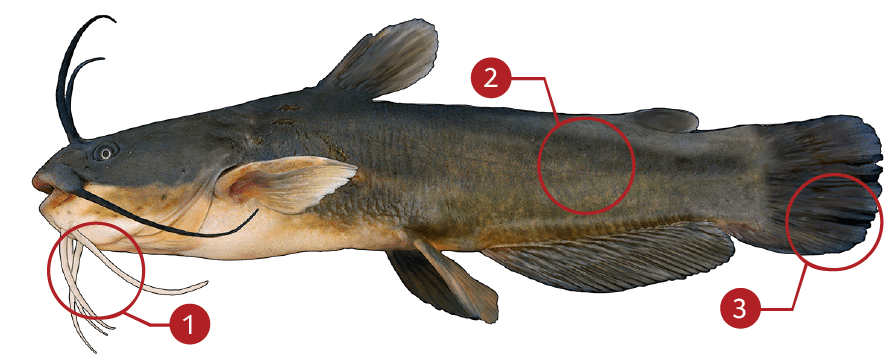YELLOW BULLHEAD
How to identify a Yellow Bullhead
The yellow bullhead ranges in color from olive to brown to almost black dorsally with a yellow or white belly and yellow or brown sides that are never mottled as they often are in the brown bullheaad. Juveniles usually have dark brown to jet black bodies. It is the only bullhead in which the chin barbels are yellow, buff, or pale instead of a dark color and the upper barbels are brown. The tail is rounded which helps to distinguish the yellow bullhead from the brown bullhead and the black bullhead, which have truncate or slightly emarginate tails. An even better distinction between the yellow and black bullheads is the spine at the top of the pectoral fins. In the yellow bullhead, as in the brown, this spine has sharp, tooth-like serrations along the back edge. In the black bullhead it is either not serrated at all or only very weakly serrated.
Where to catch Yellow Bullhead
The yellow bullhead occurs natively throughout most of the eastern and central United States (both sides of the Appalachians). In the southern portion of its range, the yellow bullhead extends further west (western Texas) than the brown bullhead (Alabama), and tends to occur in small, weedier and shallower waters. Like the other bullheads, it has also been successfully introduced outside its native range.
IDENTIFICATION

| |
Chin barbels are yellow, buff, or pale instead of a dark color and the upper barbels are brown |
| |
Olive to brown to almost black dorsally with a yellow or white belly and yellow or brown sides |
| |
Tail is rounded which helps to distinguish the yellow bullhead from the brown bullhead |
TARGET AREAS
|
|
Acknowledgements: We thank TAKEMEFISHING.org (www.takemefishing.org), Wisconsin Department of Natural Resources, Indiana Department of Natural Resources for their contributions to these FISH FACTS.

